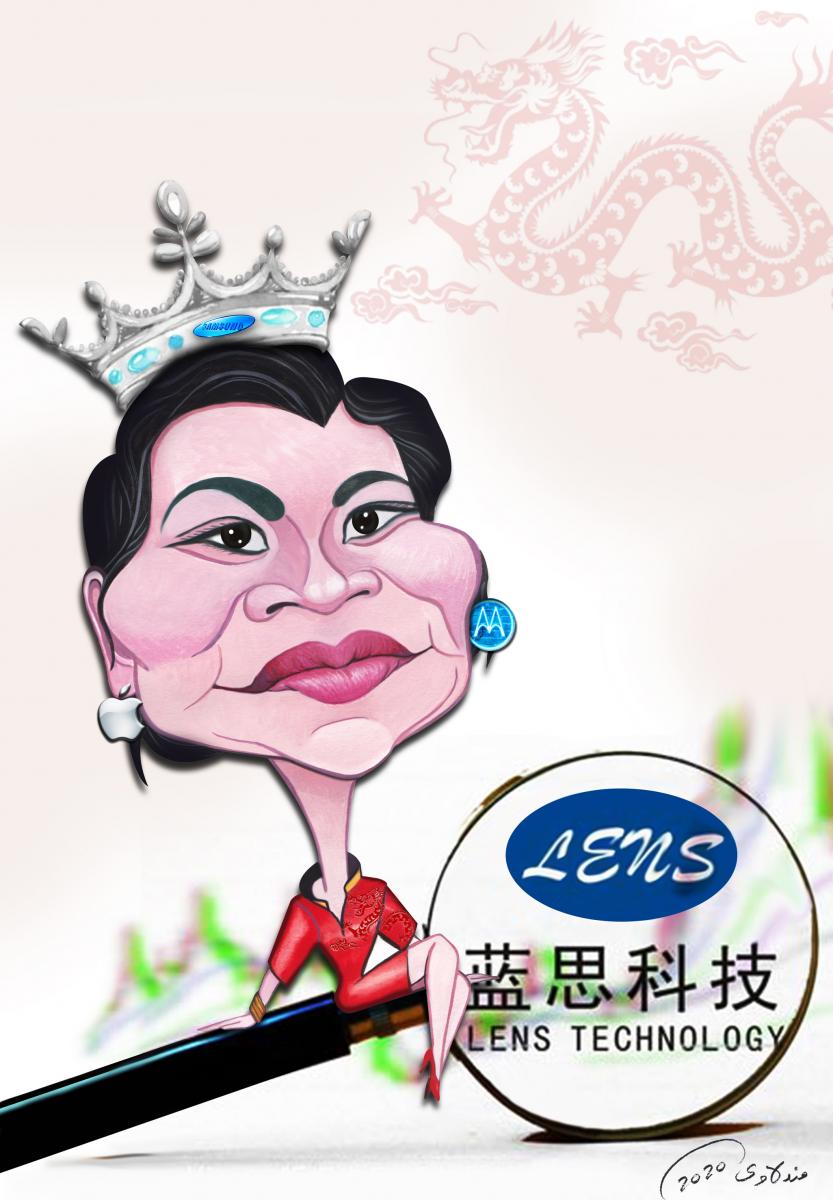
Zhou Qunfei was born in 1970 in Xiangxiang a city situated in the largely rural province of Hunan. She was born to a poor working-class family. Tragedy seemed to follow the family; her father who was a factory worker and the household’s main provider lost a finger in an industrial accident. He, nevertheless, still made ends meet by taking on a number of odd jobs such as repairing bicycles and weaving baskets. Her mother would soon die when she was just 5 years old, and her father had started to slowly lose his vision. All those tribulations meant that the young Zhou would have to start pulling her own weight to help her struggling family. As such, she would take on a job rearing pigs and ducks for a small wage.
The School Pupil turned Glass Artisan
Eventually, she would become the only member of her family to attend secondary school, and she showed promise of becoming a bright student. However, her circumstances forced her to quit school and move to her uncle’s house in Shenzhen in the more industrial province of Guangdong. To make up for her lack of a diploma, she would work for companies close to Shenzhen University where she took a number of different courses, eventually became qualified in accounting and computer operations. At the age of 22, she would work a small company that made watch parts, making an equivalent of just one dollar a day. After a few short months, she wasn’t satisfied with her working conditions and gave her management a letter of resignation. Having proved herself as a hard worker and valuable asset to the company, upper management decided to give Zhou a promotion. Her work experience and independent course work made her into a highly qualified glass lens maker.
Opportunity Knocks the Glass Ceiling for Qunfei
Eventually, the company she worked for went under and she suddenly found herself out of a job. Rather than going on a job hunt, Zhou decided to take the entrepreneurial route and start a business venture. This was a risky decision since she would need ample funding (around 3,000 dollars) to jumpstart her business. Furthermore, as startup culture in China is a male-dominated field, the odds were stacked against her. But, her family believed in her, and with their encouragement and financial cooperation, she founded her own watch lens business in 1993. The company had modest familial beginnings, as her brother, sister, their spouses, and two of her cousins were her first business partners as they turned their small 3-bedroom flat into their workstation.
Quality that’s Affordable
Zhou had a simple vision for her business, she wanted to make high-quality watch lenses at affordable prices. To ensure this quality, she took upon herself to oversee all the operations of the company, from repairs to creating improved designs of factory machinery. The quality of her company’s products caught the eye of TCL Corporation a large Chinese electronics corporation which, in 2001, contracted her company to make glass screens for their mobile phones.
The transition from Plastic to Glass
While the transition from plastic screens to glass screens would not take place in other electronics companies for another few years, it was Motorola which made this transition a bigger trend in the international market. Like TLC Corporation the American tech giant asked Qunfei’s company to make the glass screen for the Motorola Razr.
The Revolutionary Capacitive Touch Screen
Qunfei’s work with Motorola proved to be an important turning point not just in her own life, but in the mobile industry as a whole. Soon after her work on the Motorola Razr, she foresaw another transition in the mobile market: touch screens. As such, she started another company named Lens Technology to fulfill this growing demand. While touchscreens on phones were already becoming more commonplace in the early 2000s, most phones that sported this new technology had resistive touch screens, which needed pressure to function. This was a reason why many touch screen phones at the time came with a stylus, as the blunt end of this simple tool was effective in registering commands in such pressure-sensitive screens. However, in 2007, Apple introduced the first-ever iPhone to the public, a phone that popularized the capacitive touch screen in the mobile industry. Unlike, resistive screens, these glass capacitive screens were not pressure-sensitive and would respond easily to the simple touch of the human fingers and surprise, surprise it was Qunfei’s Lens Technology which provided Apple with the screens for its first iPhone. After Apple popularized the capacitive touch screen, other mobile companies followed suit. Soon enough, Lens Technology provided touch screens for companies like Huawei, Samsung and, of course, Apple. It is highly likely that the touch screen you use every day on your smartphone was made by Qunfei’s company.
Defying the Odds
Zhou Qunfei is now the world’s richest self-made woman. Her company, Lens Technology, has become an integral part of the modern mobile industry. Her journey was not an easy one as she has had to overcome poverty, sexism and harsh working conditions. However, through her perseverance, she was able to change her life and, on a wider scale, helped make our big world feel a little bit closer.







